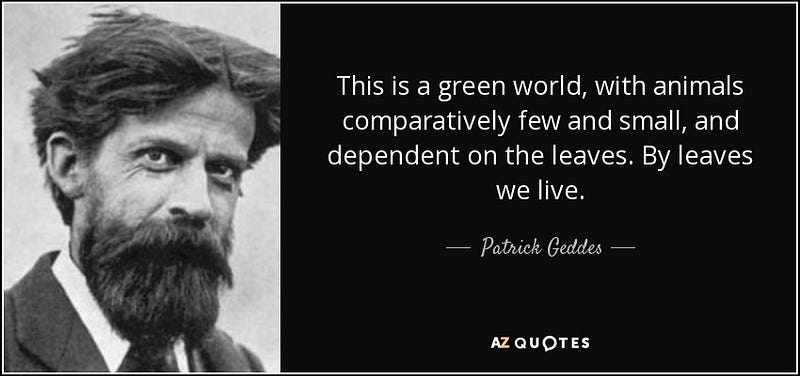Design and Planning for People in Place: Sir Patrick Geddes (1854–1932) and the Emergence of Ecological Planning, Ecological Design, and Bioregionalism

The central Geddesian lessons — his emphasis of the fundamental unity and interdependence of culture and nature, and his emphasis on transdisciplinary education and locally adapted direct action as a means of cultural transformation — are of profound contemporary significance. For Geddes the role of the designer was two-fold: i) to contribute to the material adaptation of people and their livelihood to the specific opportunities and challenges of the places they inhabit, and ii), to affect in the transformation of culture through education.
Geddesʼ aim was not only to contribute to the physical expression of culture in the form of material designs, but also to engage in cultural metadesign and affect the social and psychological expression of culture through transdisciplinary education that engaged hands, heart, and mind. Culturally transformative education has to make explicit and challenge the basic assumptions that underlie the culturally dominant worldview. Geddes advocated a design approach that encompassed bioregional integration, changes in culture and worldview, as well as transdisciplinary synthesis and holistic education. Almost a century ago, he wrote:
“Our greatest need today is to see life as whole, to see its many sides in their proper relations; but we must have a practical as well as a philosophical interest in such an integrated view of life.”1
At a time when the effects of humanityʼs exploitation of the Earthʼs natural resources, the decimation of cultural and biological diversity2, and the anthropogenic alteration of the planetʼs atmospheric composition are beginning to produce alarming ecological, social and economic effects, Patrick Geddesʼ call for an integrated view of life deserves even more attention, today, then it did a hundred years ago. Geddes firmly believed that ʻthere is a larger view of Nature and Life, a rebuilding of analyses into Synthesis…ʼ.3
Read more here.


















